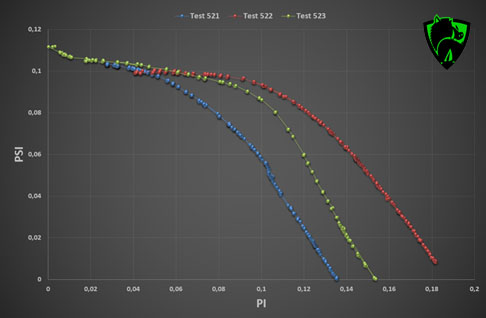

Hello,
How important are graphs in our work? I would say fundamental, all the measures we do, whether according to AMCA 210 or according to ISO 5801, must be disclosed and the best way to view the results is the XY graphs. We all spent several hours building comparison charts between different tests or for the catalogs of our sales colleagues; trying to make fascinating data that only a few are. With the newly released AMCA-3 acquisition software, all of our wind tunnels provide an exceptional, easy-to-use, powerful, and quickly shareable graphic construction tool.
Whether you want to present the results of a test or if you want to represent comparisons between multiple tests, our tool will allow you to do everything quickly and effectively.
You will no longer have to correct the titles or colors of the graphs, everything will be simple and correct.
Our software will allow you to make graphs of all the acquired quantities and to display all the most significant dimensionless coefficients.
A short list of the most used graphs both in the single test report and in the report of multiple comparison tests.
All electrical measurements can be referred to both the total absorbed value and the effective value, using a high frequency filter to eliminate all DC components that are not effective for rotary motion.
Furthermore, the graphs of the dimensionless flow (Pi) and pressure (Psi) coefficients are available
Pi = Q / (w * D ^ 3)
Psi = P / (ro * (w * D) ^ 2)
where is it:
Q = Air flow rate [m3 / s]
w = rotational speed = 2 * pi.greco () * rpm / 60
D = characteristic diameter [m]
ro = density [kg / m3]
P = Pressure [Pa]

we recommend as a characteristic diameter the use of the fan diameter in the case of axial fans and the product between the fan diameter and the blade height in the case of centrifugal fans, but this is only a practical advice.